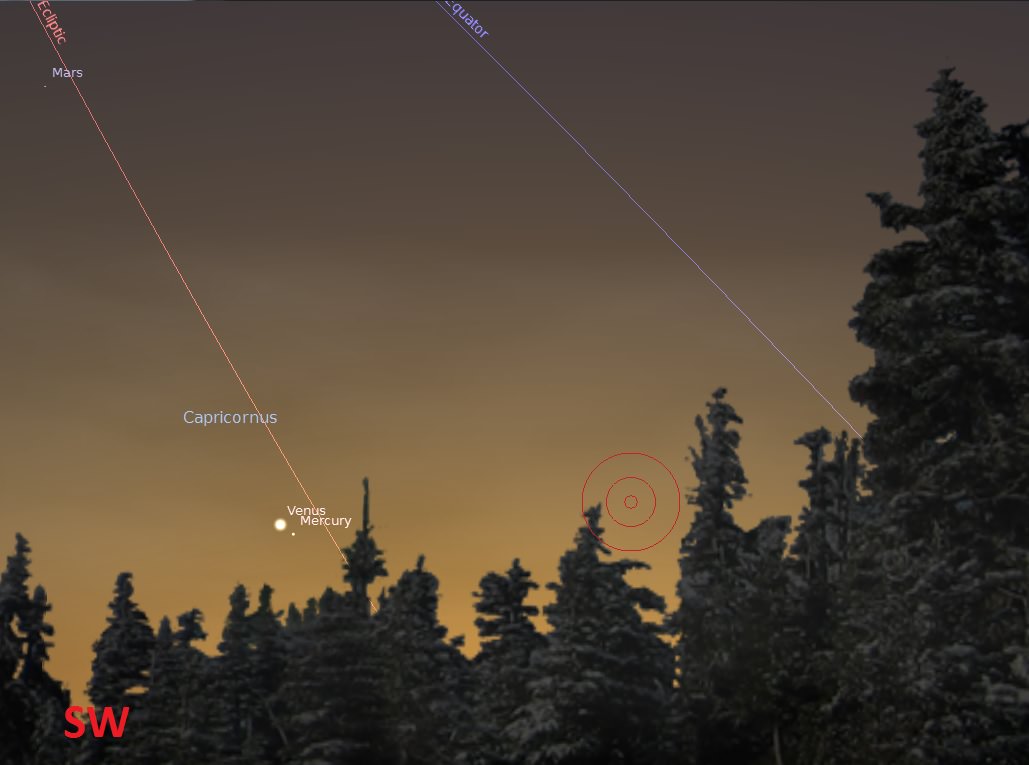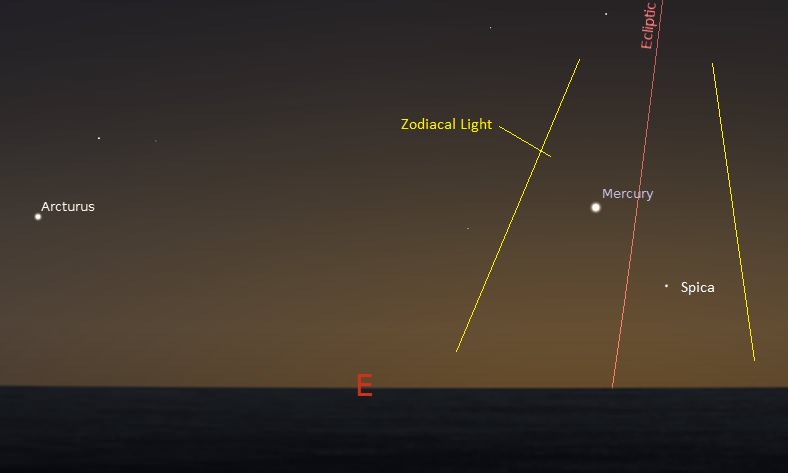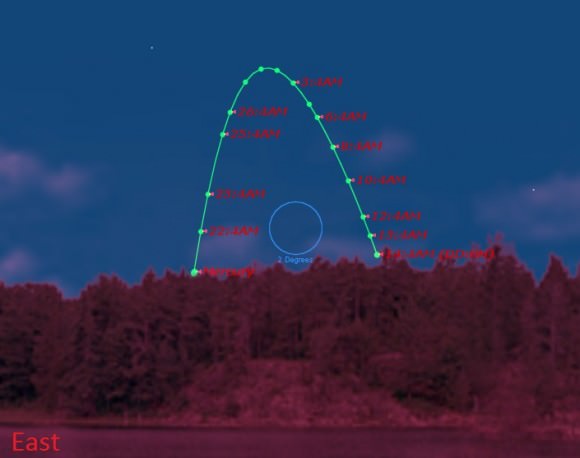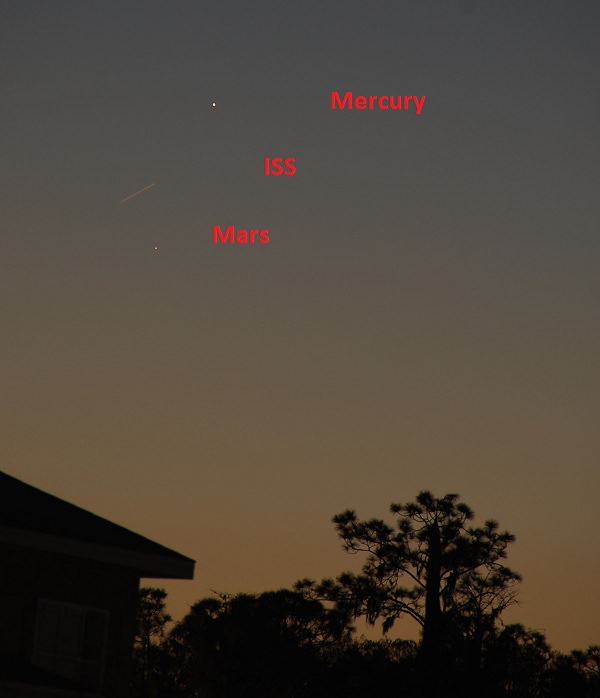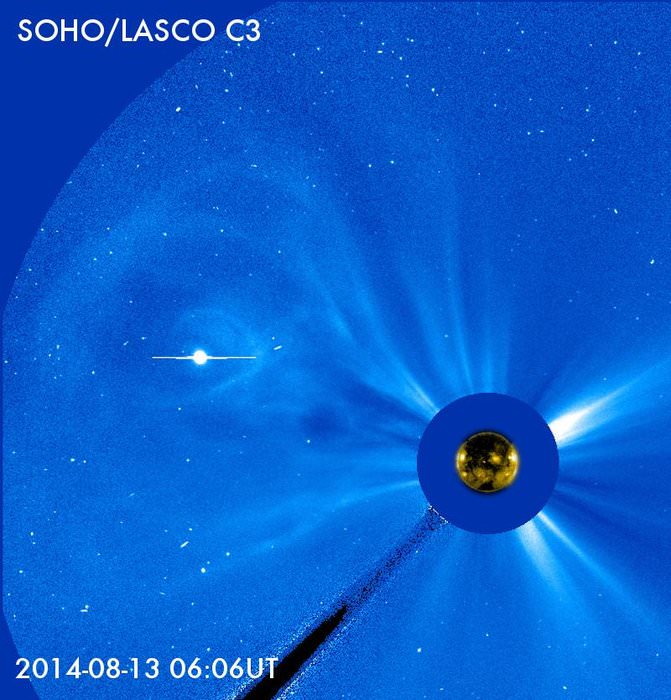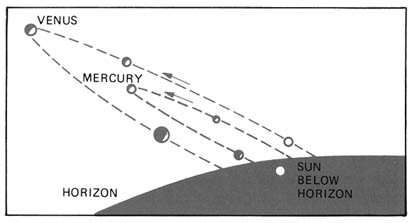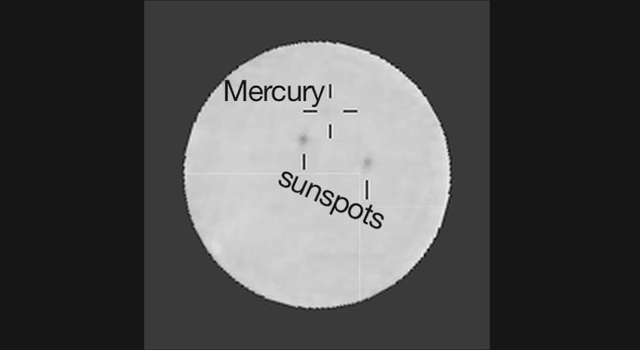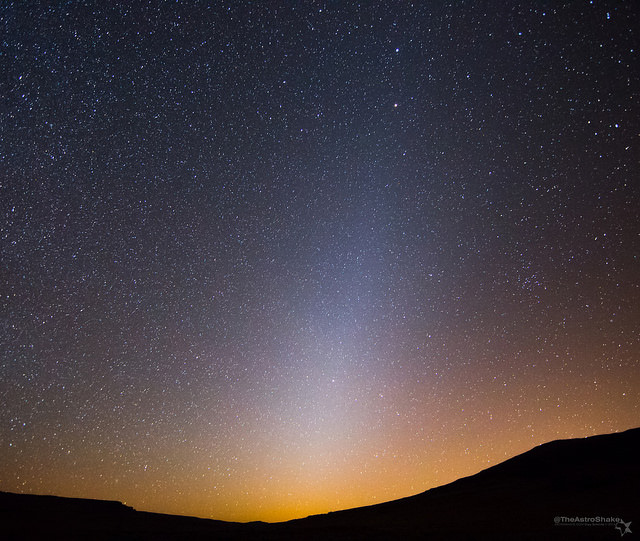Missing Venus? The third brightest natural object in the heavens returns to prime time dusk skies in 2015 after being absent and lingering in the dawn for most of 2014. But there’s another reason to hunt down the Cytherean world this week, as elusive Mercury chases after it low in the dusk. If you’ve never seen Mercury for yourself, now is a great time to try, using brilliant Venus as a guide.
The circumstances surrounding this pairing are intriguing. We have to admit, we missed this close conjunction whilst filtering through research for the Top 101 Astronomical Events for 2015 due to those very same unique attributes until an astute reader of Universe Today pointed it out.
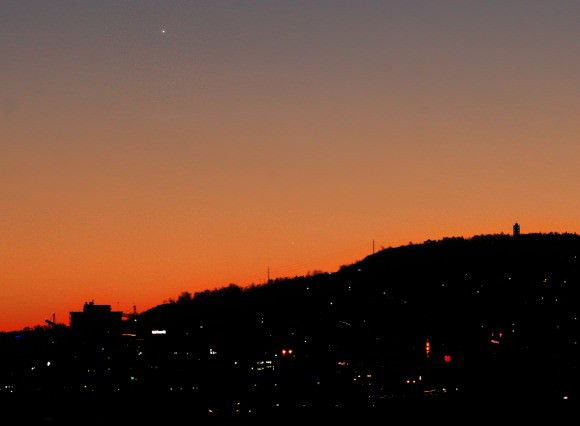
On the evening of January 5th, Venus shines at magnitude -3.3 and sits about 18 degrees east of the Sun in dusk skies. You’ll have a narrow window of opportunity to nab Venus, as it’ll sit only 10 degrees above the southwestern horizon as seen from latitude 40 degrees north about an hour after sunset. Make sure you have a clear, uncluttered horizon, and start sweeping the field with binoculars about half an hour after sunset.
Do you see a tiny point of light about a degree and a half to Venus’s lower right? That’s Mercury, just beginning its first dusk apparition of seven for 2015, the most possible in a calendar year. Shining at -0.7 magnitude, Mercury is currently about 8 times fainter than Venus, and drops to +1.4 magnitude by late January.
If you watch the pair on successive evenings, you’ll see Mercury — aptly named after the fleet-footed Roman god — racing to rapidly close the gap. Mercury crosses the one degree separation threshold from January 8th through January 12th, and sits just 39’ — slightly larger than the apparent size of the Full Moon — right around 7:00 PM EST/Midnight Universal Time on January 10th, favoring dusk along eastern North America just a few hours prior.
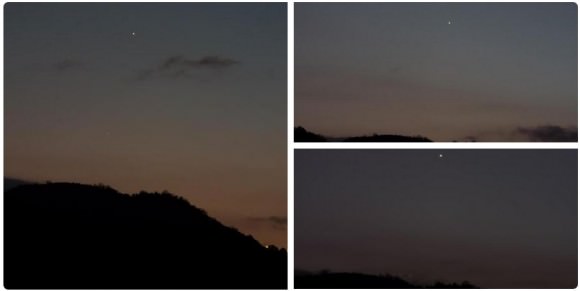
This also means that you’ll be able to squeeze both Mercury and Venus into the same low power telescopic field of view. They’ll both even show the same approximate gibbous phase, with Venus presenting a 10.5” sized 95% illuminated disk, and Mercury subtending 6” in apparent diameter with a 74% illuminated visage. Venus will seem to be doing its very own mocking impersonation of the Earth, appearing to have a single large moon… Neith, the spurious pseudo-moon of Venus lives!
One curious facet of this week’s conjunction is the fact that Venus and Mercury approach, but never quite meet each other in right ascension. We call such a near miss a “quasi-conjunction.” This is the closest pairing of Venus and Mercury since 2012, though you have to go all the way back to 2005 for one that was easily observable, and the last true quasi-conjunction was in October 2001. Miss this week’s event, and you’ll have to wait until May 13th 2016 to catch Mercury — fresh off of transiting the Sun a week earlier — passing just 26’ from Venus only 6.5 degrees west of the Sun. This is unobservable from your backyard, but SOHO’s LASCO C3 camera’s 15 degree wide field of view will have a front row cyber-seat.
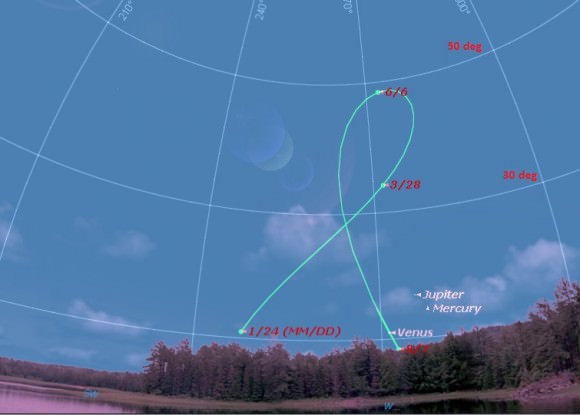
In 2015, Venus will become ever more prominent in the dusk sky before reaching greatest elongation 45.4 degrees east of the Sun on June 6th, 2015. The angle of the January ecliptic at dusk is currently shoving Mercury and Venus southward for northern hemisphere observers, though that’ll change dramatically as we head towards the March equinox. Venus reaches solar conjunction sans transit (which last occurred in 2012 and won’t happen again til 2117 A.D.) on August 15th before heading towards its second elongation of 2015 on October 26th in the dawn sky. And don’t forget, it’s possible to see Venus in the daytime as it approaches greatest elongation. Venus is also occulted by the Moon 4 times in 2015, including a fine daytime occultation on December 7th for North America.
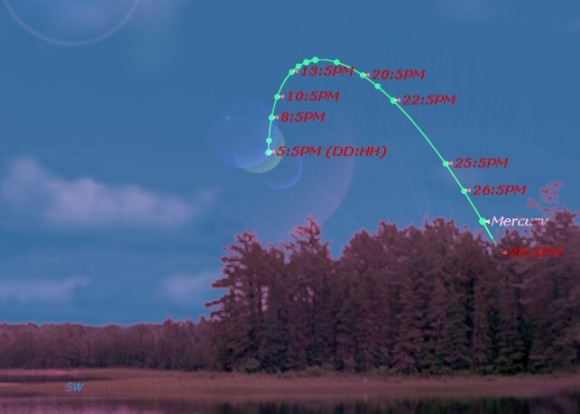
This month, Mercury reaches greatest eastern elongation on January 14th at 18.9 degrees east of the Sun. Mercury begins retrograde movement later this month — one of the prime reasons this week’s conjunction is quasi — before resuming direct (eastward) motion as seen from our terrestrial vantage point. Though it may seem convenient to blame your earthly woes on Mercury in retrograde as astrologers will have you believe, this is just an illusion of planetary orbital motion. And speaking of motion, Mercury transits the Sun next year on May 9th.
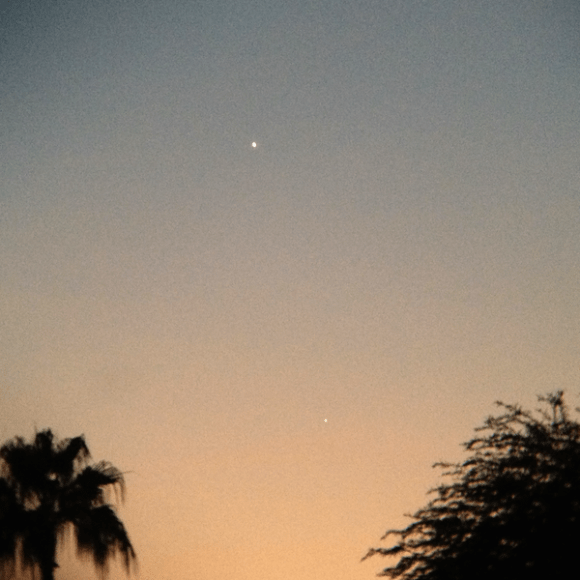
Mercury and Venus factor in to space exploration in 2015 as well. NASA’s MESSENGER spacecraft wraps up its successful mission in orbit around Mercury in a few months, and the Japanese Space Agency takes another crack at putting its Akatsuki spacecraft in orbit around Venus this coming November.
So don’t fear the bone-chilling January temps (or Mercury in retrograde) but do get out there these coming evenings and check out the fine celestial waltz being performed by the solar system’s two innermost worlds.

